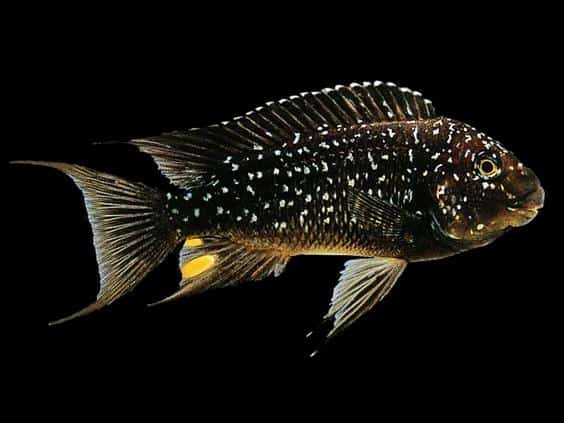
Common name: Petrochromis Trewavasae
Scientific name: Petrochromis Trewavasae
Average Adult Fish Size: 18cm / 7 Inches
Place of Origin: Lake Tanganyika
Typical Tank setup: Rocky Tanganyika tank with plenty of open swimming space
Recommended Minimum Aquarium Capacity: 600 Litres
Compatibility: Petrochromis cichlids should really be kept with other Petrochromis in a species only tank however some keep smaller younger Petro’s with Tropheus. Due to the huge appetite the Petrochromis have it may not be advisable to even keep Tropheus with them due to the possibility of them over eating and developing Tropheus Bloat.
Temperature: 24-27 Deg C / 74-79 Deg F
Water chemistry: pH 7.6-8.6
Feeding: Spirulina-based flake food supplemented with fresh green vegetables such as romaine lettuce and spinach.
Sexing: Males may grow quicker and become larger than females and venting can also be done to try to work out the sex however this can prove to be tricky for some.
Breeding: Males are quite territorial and are aggressive in their attempts to coax females to spawn. They never seem to tire of this either – males want to spawn every minute of the day. This fish should never be kept in 1:1 ratios. One male to three or four females is an ideal ratio, but keep in mind that the only correct way to keep this species in captivity is in a group of ten or more individuals. The most difficult challenge to breeding Petrochromis is bringing the females into spawning condition.
Additional Information: Often thought of as one of the hardest tropical fish to keep and the ultimate fish to manage to breed due to the high price tag these fish demand. Species are being brought in to Europe more frequently now compared to say 2010 however they are still very rare but an absolute marvel in the aquarium if you can successfully keep them. Must be kept in a very large aquarium and is recommended to be a species only tank.
The Petrochromis sp. Trewavasae can almost be likened to young Tropheus Duboisi with their black colouration and white spots however some specimens can be quite washed out and the spots barely seen.


Related Posts
Croaking Gourami – Trichopsis vittatus
Paradise Fish – Macropodus opercularis
Schubert’s Barb – Barbus Semifasciolatus